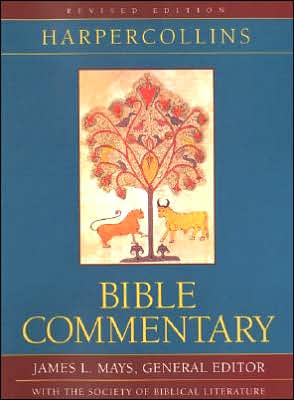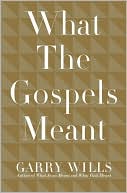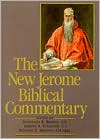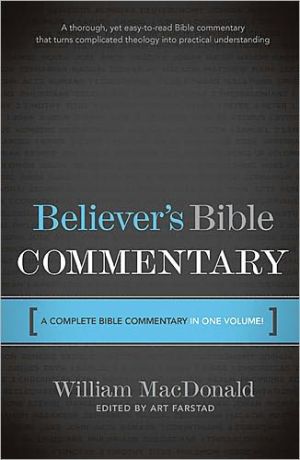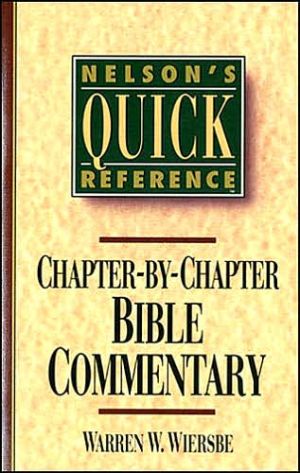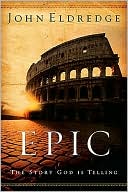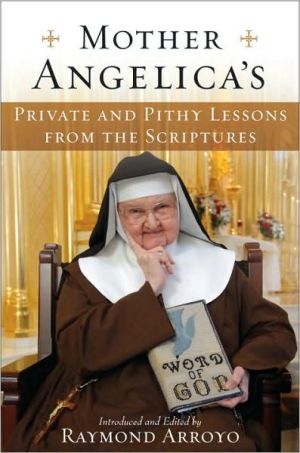HarperCollins Bible Commentary
The Bible –– sacred scripture, literary classic, historical document. No matter how it is viewed, it remains the basis of much of Western culture. This fully revised edition of the HarperCollins Bible Commentary is the most up–to–date reference book of its kind for understanding and interpreting the meaning of the Bible. The accessible and highly readable format sets a new standard for excellence.\ The Commentary covers all of the Hebrew Bible, as well as the books of the Apocrypha and those...
Search in google:
This total revision of the HarperCollins Bible Commentary offers concise, lucid, expert guidance on every aspect of the complete Bible—the Old and New Testament, as well as the Apocrypha. The contributors represent the best scholarship available today. They address the full variety of questions and concerns readers have about the Bible. Widely respected scholar James Mays has assembled an outstanding team of editors and contributors and together they have produced a first-class presentation of the best of our biblical knowledge for professionals, students, and lay readers alike. This volume is essential reading for anyone seeking to understand and embrace the Bible more fully.
The Bible\ The Book of Books\ Fred B. Craddock\ To refer to the Bible as the "Book of Books" pays tribute to its place in Western culture, honors it with a title of elevation similar to "King of Kings" or "Lord of Lords," that is, the Book above all books. Such an interpretation of the expression would not be inappropriate. Far beyond the community in which the Bible is normative and received as revelation, it is held in highest esteem, evoking reverence apart from belief in its messages. In the Western world, the Bible's influence in the history of languages has long been recognized. Without question, the characters, stories, poetry, wise sayings, profound human dramas, and lofty meditations on God within the Bible have been the primary source for more literary and artistic productions than any other book or collection of books. Hundreds of sentences and phrases from the Bible have passed into popular discourse, repeated by persons who have no idea of their source: "She saw the handwriting on the wall"; "I wash my hands of the whole matter"; "Let there be light"; "Lo, the prodigal has returned"; "He was a lamb led to slaughter"; and so on The Bible is likewise the Book of Books in the realms of moral and ethical discourse. The Ten Commandments and the Sermon on the Mount are without parallel as influences in the shaping of thinking on matters of right and wrong. And all this is without mentioning the obvious, that serious theologies are developed in continuous engagement with the Bible. It is indeed the Book of Books.\ However, in a commentary such as this, the phrase "Book of Books" is not so much an expression of honoras a description of content-the Bible is a book made up of many books. In fact, the English word "Bible" is derived from the Greek and Latin word biblia, which plural, and properly so. The Bible is an anthology, or better yet, a library, a fact that would quite evident were the books individually bound and placed on a shelf. Written over a period of approximately twelve hundred years, these writings reflect a wide range of geographical, political, economic, social, and religious circumstances and present a variety of responses those circumstances. The communities of faith portrayed in these books gave expression their faith in richly diverse ways: histories, genealogies, allegories, legends, legal document; courtroom records, poetry, parables, wise sayings, oracles, divine pronouncements, co-spondence, apocalyptic visions, and many more. This diversity in literary forms as well theological perspectives should alert readers not to move too easily and uncritically from book to book. Concordances are helpful for locating words and phrases, but they can also seduce one into running references and losing sight of the concrete historical embeddedness of each text. However, that these many books have been bound together in one volume testifies to clear evidences that these books do belong together, that there is unity in this Book of Books. The themes of unity and diversity will be developed later in this article, but it should be noted here that neither unity nor diversity should be imposed on the Bible; it will speak for itself on both matters.\ The Book\ To this point, the word "book" has been used as though it were a proper way of referring to these writings, as though it were descriptive of their nature from the time of their origin. Such is not the case. A book's pages are bound at one edge and readers move through the document by turning pages. This form not only facilitates reading, but also rereading, reviewing, referencing, and cross-referencing. The same cannot be said of the ancestor of the book, the scroll. The codex, or earliest form of the book, became increasingly common by the end of the first century, but scrolls continued to be used for some time (- Codex; Scroll). The point here is that the form in which one receives a text contributes to the way one experiences that text. Isaiah as a collection of scrolls (a single scroll could not contain longer writings) and Isaiah as a book provide quite different experiences for readers. In addition, referring to all the writings in the Bible as "books" contributes to an unintentional homogenizing, obscuring their literary particularities. Readers who continue to use the traditional phrases such as the "book of Ruth" or the "book of Philemon" or the "book of Revelation" will want to guard against anticipating a common experience in these three "books" of the Bible. A love story, a personal letter, and an apocalyptic vision refuse to be read the same way.\ The Bible\ All the preceding comments were spawned by the desire to understand what we mean and what others mean when speaking of the "Bible.' Of course, among members of the same faith community, meaning is self-evident when references are made to "the "Bible," but not all faith communities have the same Bible. Enlarge the conversation and one begins to speak of the "Bible of such and such community." Judaism, Islam, and Christianity are all communities of the book; that is, sacred Scripture is at the center of religious life. With Islam, the book came first and from it was created a community, but Judaism and Christianity developed in complex reciprocity with their books, and neither community nor book can be understood apart from the other. Whether the community stands under the book (traditional Protestant view) or the book stands under the community (traditional Roman Catholic view) is a debate between partial truths. In practice, the community and the book are in continual conversation. Of course, not all parts of the community directly engage the book; many look to their leaders and scholars for this service, yet reserve for themselves the right to do so at any time...
